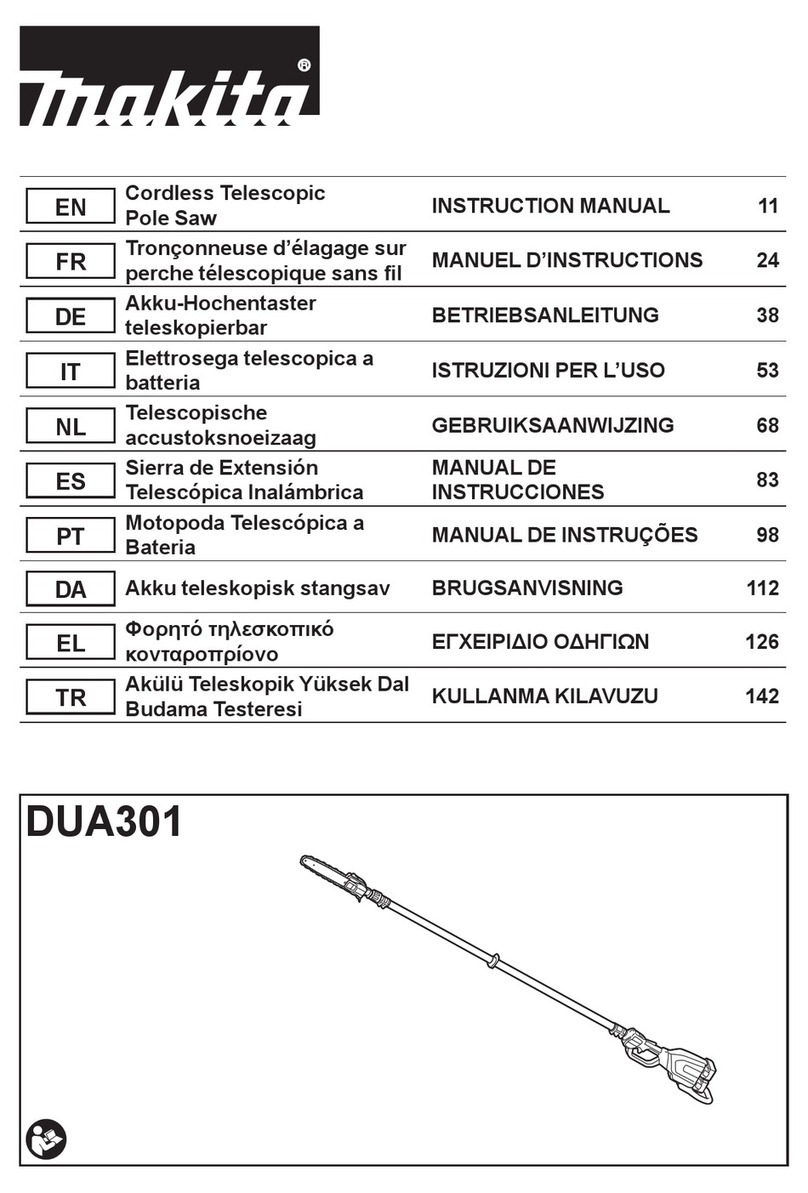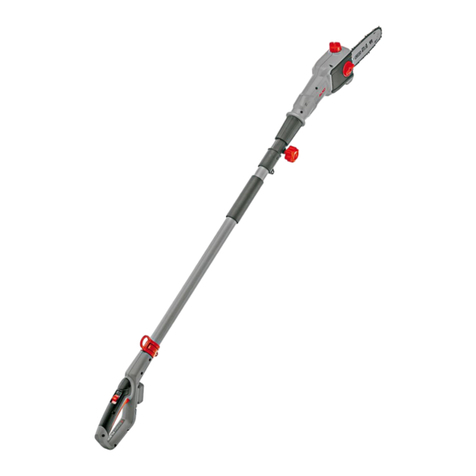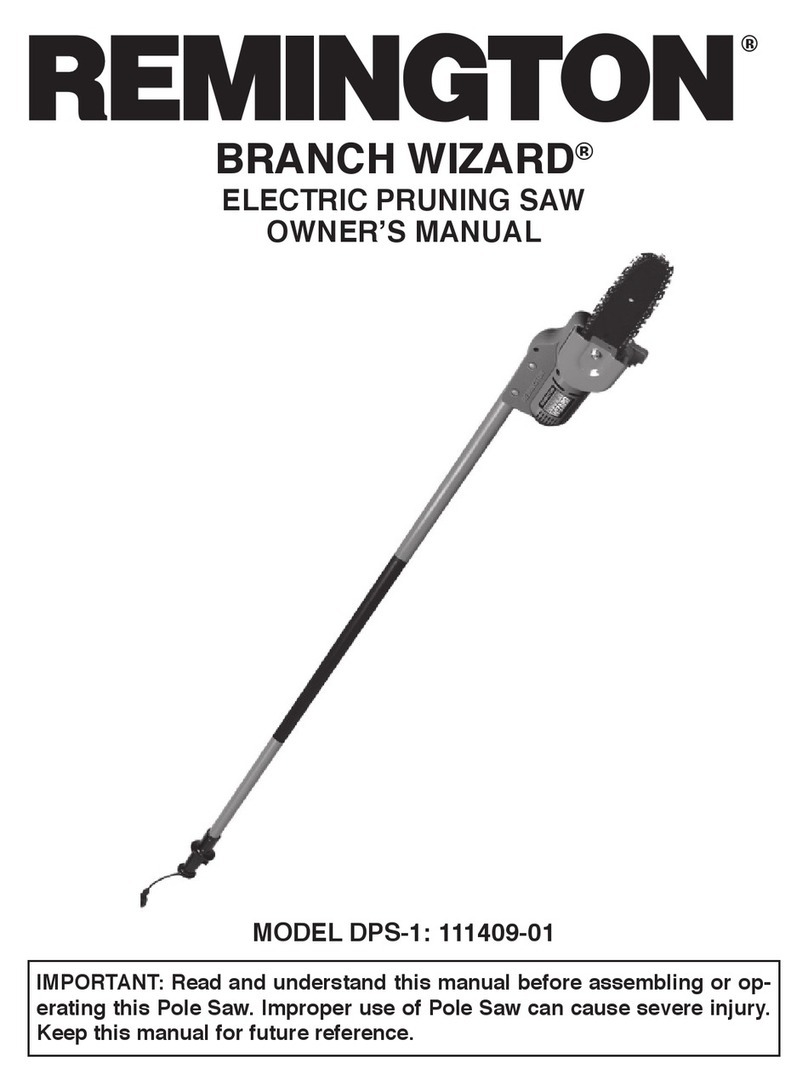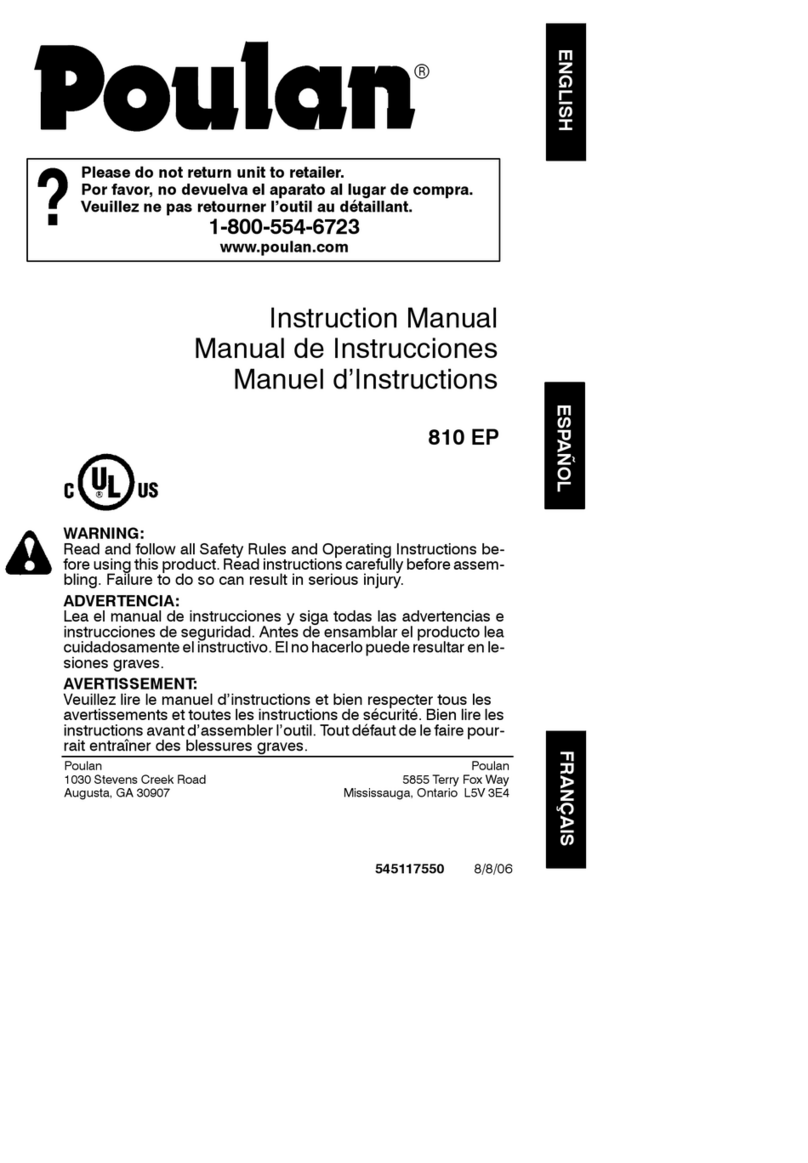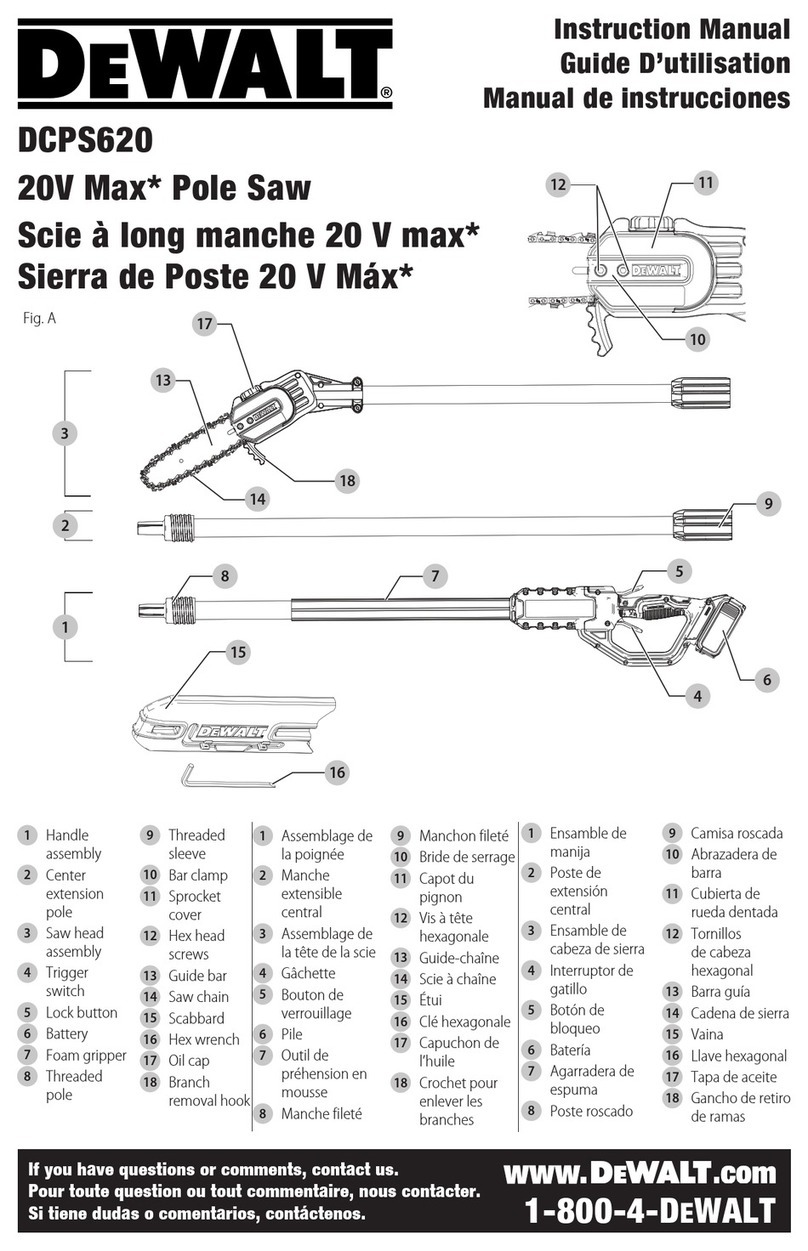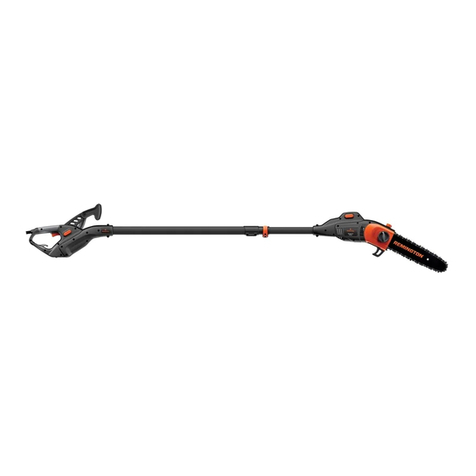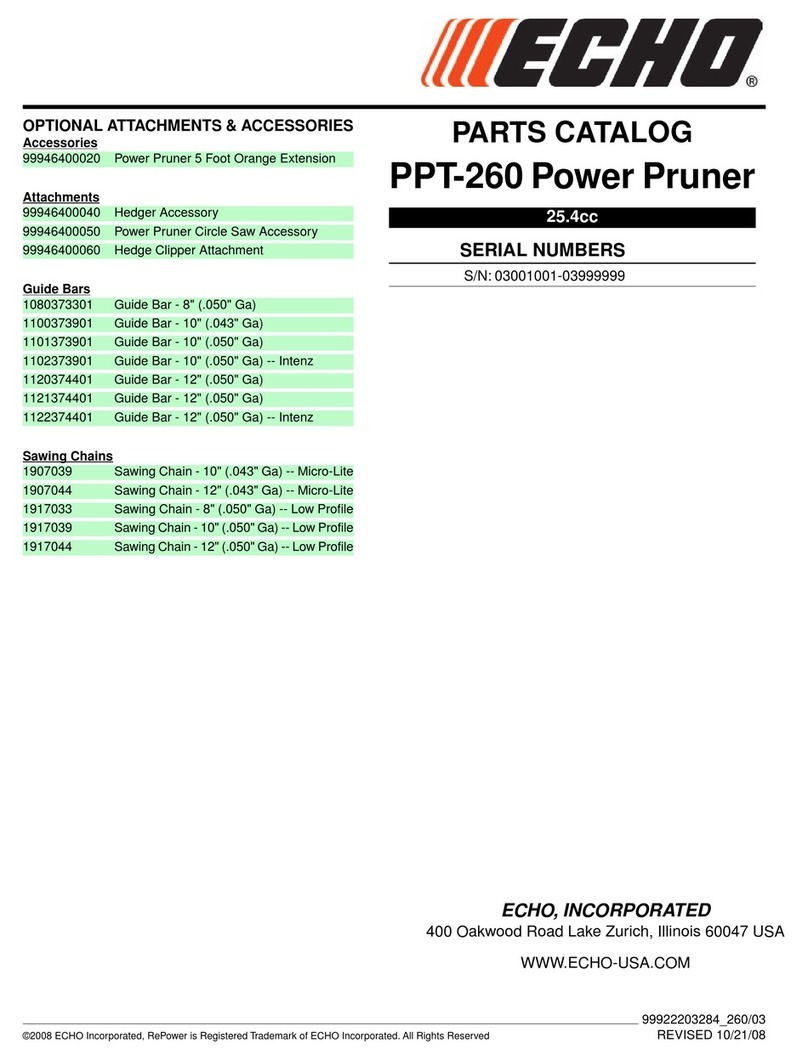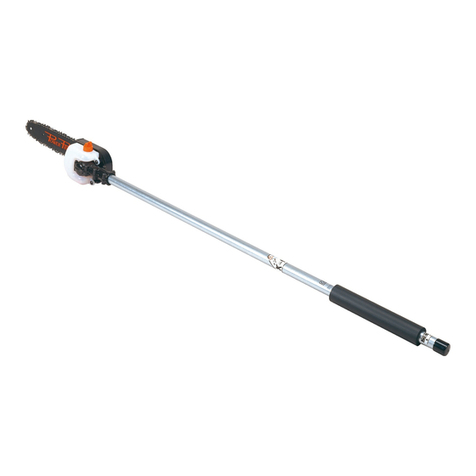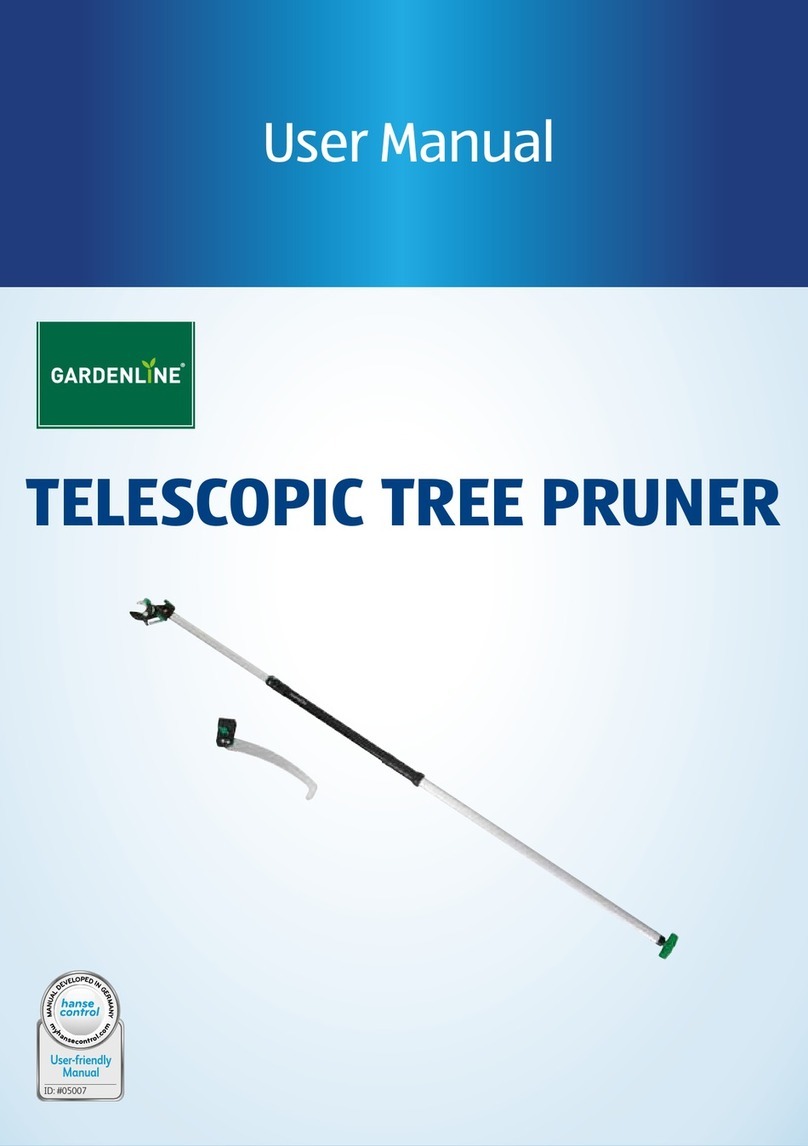
accessories, or storing power tools.
Such preventive safety measures
reduce the risk of starting the power tool accidentally.
d) Store idle power tools out of the reach of children and do not allow
persons unfamiliar with the power tool or these instructions to operate
the power tool.
Power tools are dangerous in the hands of untrained users.
e) Maintain power tools. Check for misalignment or binding of moving
parts, breakage of parts and any other condition that may aect the
power tool’s operation. If damaged, have the power tool repaired
before use.
Many accidents are caused by poorly maintained power tools.
f) Keep cutting tools sharp and clean.
Properly maintained cutting tools
with sharp cutting edges are less likely to bind and are easier to control.
g) Use the power tool, accessories and tool bits etc. in accordance with
these instructions, taking into account the working conditions and the
work to be performed.
Use of the power tool for operations dierent from
those intended could result in a hazardous situation.
h) Keep handles and grasping surfaces dry, clean and free from oil and
grease.
Slippery handles and grasping surfaces do not allow for safe
handling and control of the tool in unexpected situations.
5) Service
a) Have your power tool serviced by a qualied repair person using only
identical replacement parts.
This will ensure that the safety of the power tool
is maintained.
6) Recommendation
Recommendation that the tool always be supplied via a residual current
device having a rated residual current of 30 mA or less.
1) General chain saw safety warnings:
a) Keep all parts of the body away from the saw chain when the chain saw
is operating. Before you start the chain saw, make sure the saw chain is
not contacting anything.
A moment of inattention while operating chain
saws may cause entanglement of your clothing or body with the saw chain.
b) Always hold the chain saw with your right hand on the rear handle and
your left hand on the front handle.
Holding the chain saw with a reversed
hand conguration increases the risk of personal injury and should never be
done.
c) Hold the chain saw by insulated gripping surfaces only, because the saw
chain may contact hidden wiring or its own cord.
Saw chains contacting
7



